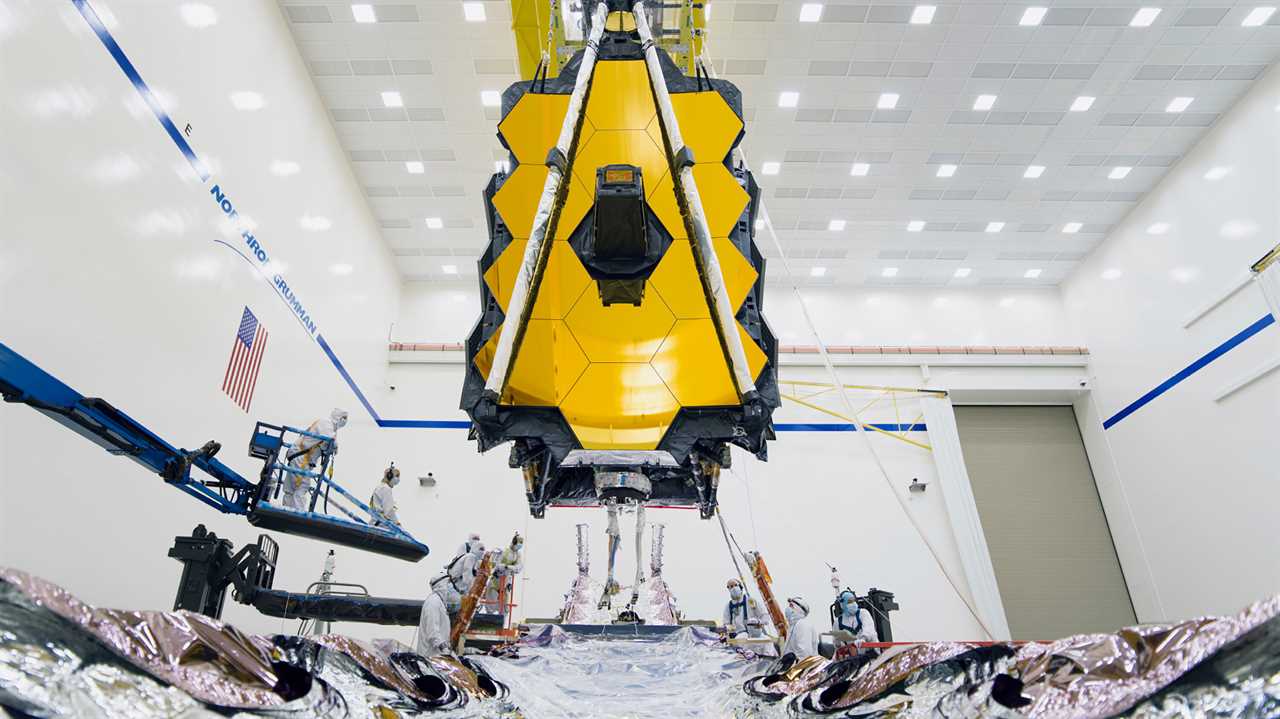
NASA’s next flagship observatory, the James Webb Space Telescope, is gearing up for its launch to space on Friday morning — finally. The Webb telescope is the biggest observatory built for launch into space. Its 18 gold-plated mirrors make for a system that is far more sensitive than the Hubble Space Telescope, which it will succeed as humanity’s most powerful scientific instrument for studying the formation of our universe and distant worlds in our galaxy.But the Webb, with a price tag of some $10 billion, has trudged through one of the most fraught development timelines of any space program, lasting over two decades and costing billions more than its original estimate.“The stuff they faced was what a lot of space programs face, because everything has to be perfect on a spacecraft like that — you can’t go fix it after launch,” said Cristina Chaplain, who for roughly a decade led audits of the James Webb Space Telescope at the Government Accountability Office, Congress’ watchdog agency.“It’s very complex and fragile,” she said. “There’s going to be mistakes, but on a program like that, one little teensy thing can have dramatic consequences.”Here’s a look back at some of the loose screws, cost overruns, stealthy trips at sea and political controversies that the James Webb Space Telescope and its supporters endured on their way to the launchpad.$1 billion and launching in 2010.
Planning for a telescope to come after Hubble began in 1996, but the Webb did not get its current name until 2002. NASA picked Northrop Grumman to build it, estimating costs from $1 billion to $3.5 billion. Mission managers expected it to launch as early as 2010.Construction of Webb’s most complex structures — its main science instruments and the massive 18-plate mirror — began in 2004. In 2005, a review prompted redesigns to scale back its technical complexity.$4.5 billion and launching in 2013.
Though less complex, the telescope became more expensive, with the price tag swelling to $4.5 billion, and NASA officials estimated a new launch date in 2013.Well into the telescope’s construction around 2009, engineers and NASA officials began to grapple with the difficulty of inventing, building and testing cutting-edge technologies.One challenge was developing the observatory’s “cryo-cooler” to keep Webb’s ultrasensitive infrared sensors and computers from overheating in space. Developing the telescope’s micro shutter array, a small device crucial to surveying massive swaths of the sky, was also difficult. The device, the size of a postage stamp, contains some 248,000 tiny shutters, or windows — each only a few times larger than a human hair — that open and close to allow light in.It became clear that the telescope could not be built for the amount of money Congress had appropriated.ImageAn artist’s impression of the telescope, folded in the Ariane 5 rocket during launch.Credit...D. Ducros/ESA, via EPA, via Shutterstock$8.8 billion and launching in 2018.
An independent review of the program ordered by Congress in 2010 “found that the program was in a lot of trouble, and it wasn’t going to meet its cost and schedule deadlines, and it was not being funded appropriately, and there were a lot of management and oversight issues that were called out,” Ms. Chaplain said.“I think it was a bit of a surprise,” she said. “It hit Congress pretty hard.”The review estimated a new cost of $6.5 billion and a launch date of September 2015. In response, some lawmakers proposed a bill that would have canceled the telescope entirely.But NASA vowed to get the program back on track, and prepared new estimates: an $8.8 billion total charge, including development and managing the telescope after its launch, with an October 2018 launch date.To keep NASA in check, Congress capped the cost of the program’s development at $8 billion and required Ms. Chaplain’s team at the G.A.O. to conduct annual audits. It “was probably the first time we were asked to look at a major NASA program every year,” she said.$9.6 billion and launching in 2021.
The telescope’s construction was completed in 2016. That’s when NASA and Northrop Grumman discovered a new set of bugs.In 2017, NASA announced it would need to launch the telescope in 2019, because “integration of the various spacecraft elements is taking longer than expected,” the agency’s science chief, Thomas Zurbuchen, said in a statement at the time, stressing the change was not the result of any accident. No boosts to the program’s budget were needed, the agency indicated.Then, an independent review in 2018 found that a handful of human errors had caused more delays and cost increases. The telescope’s propulsion valves were damaged when engineers used the wrong solvent to clean them.By: Joey Roulette
Title: How NASA’s Biggest Telescope Beat Loose Screws, Loose Budgets and Loose Clamps
Sourced From: www.nytimes.com/2021/12/23/science/webb-nasa-launch-delay.html
Published Date: Thu, 23 Dec 2021 10:00:15 +0000
Read More
Did you miss our previous article...
https://badpoliticians.com/us-politics/john-thune-a-likely-successor-of-mitch-mcconnell-weighs-retirement
 UK PoliticsWorld PoliticsVideosPrivacy PolicyTerms And Conditions
UK PoliticsWorld PoliticsVideosPrivacy PolicyTerms And Conditions
